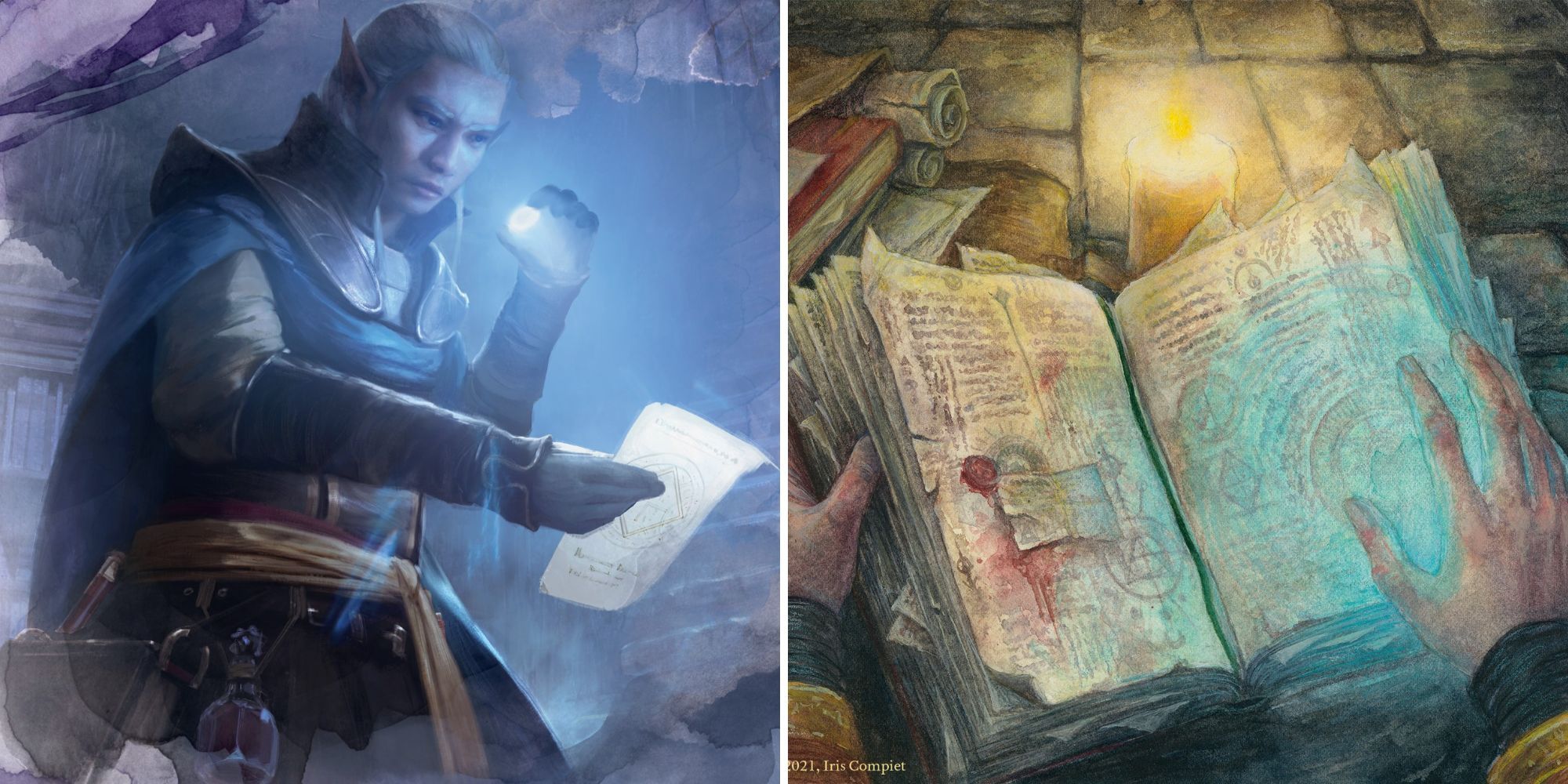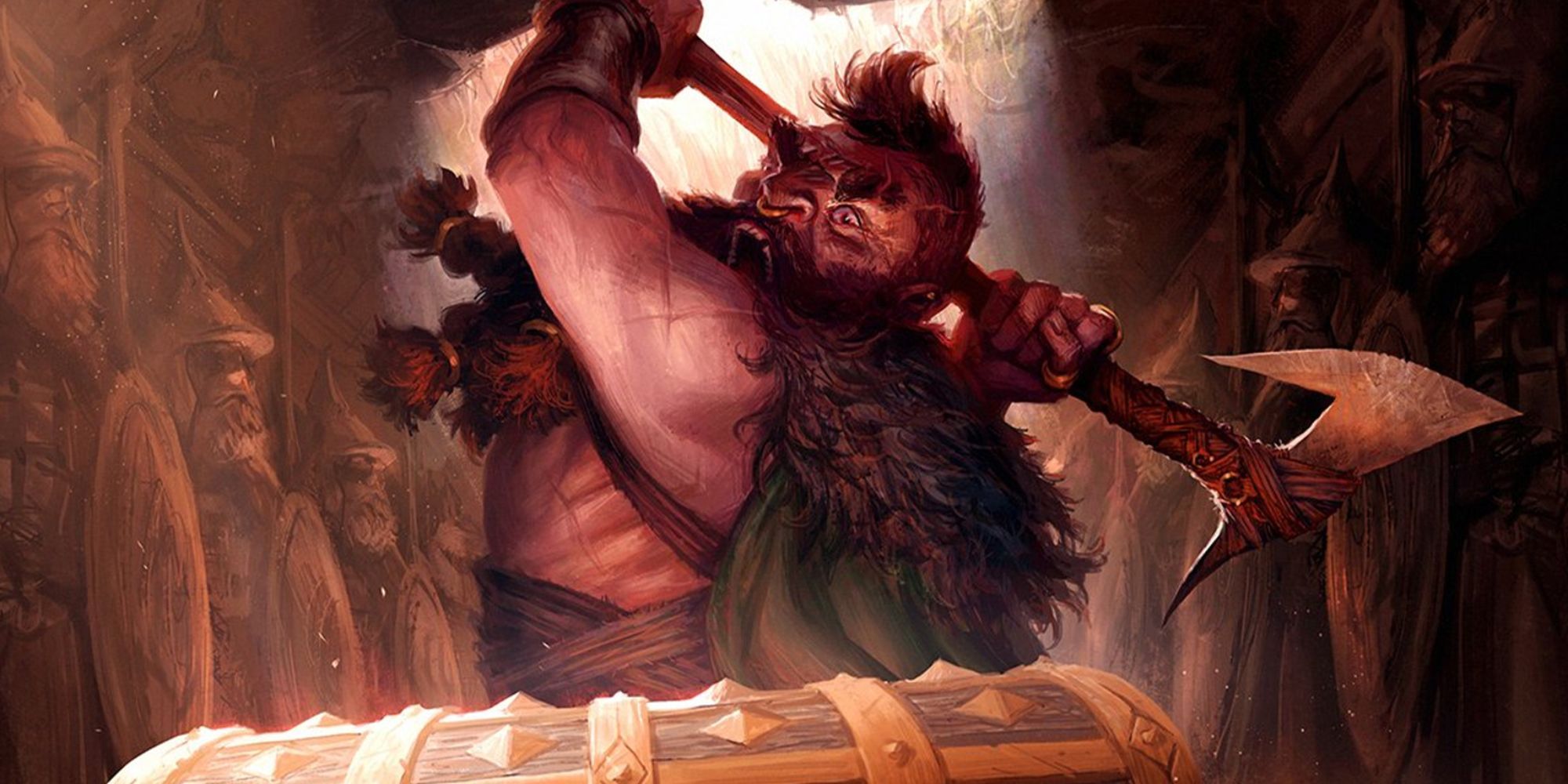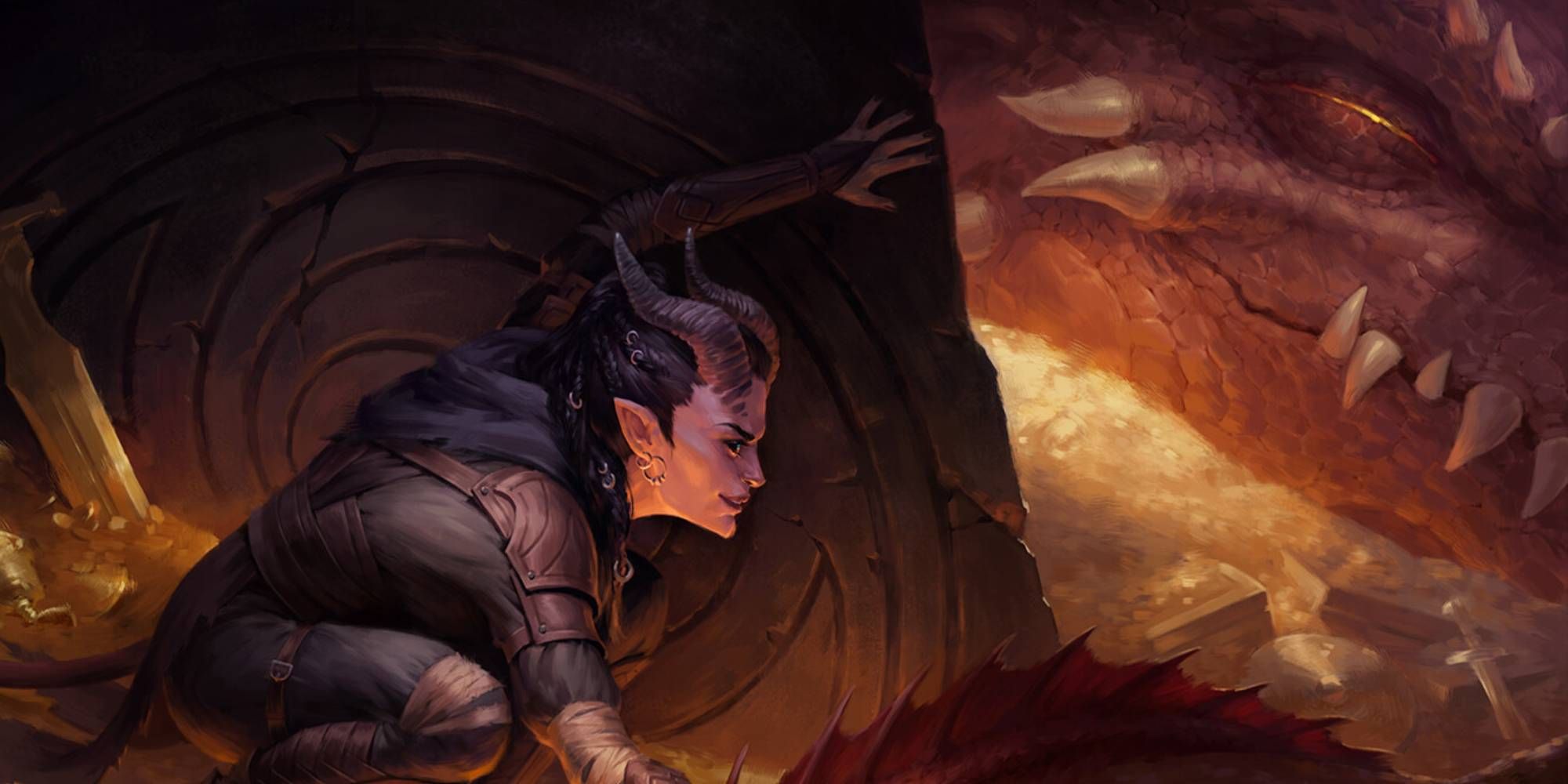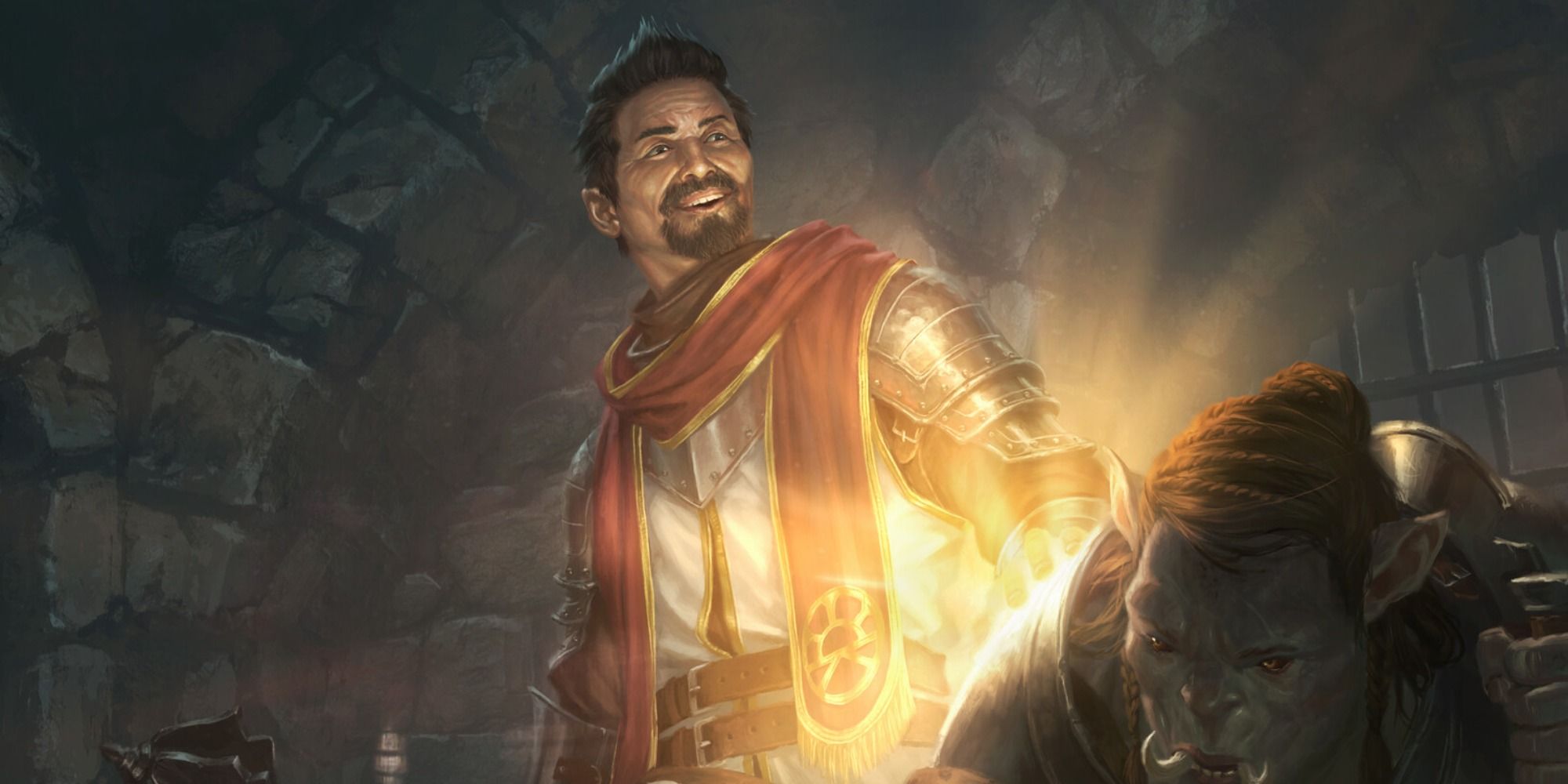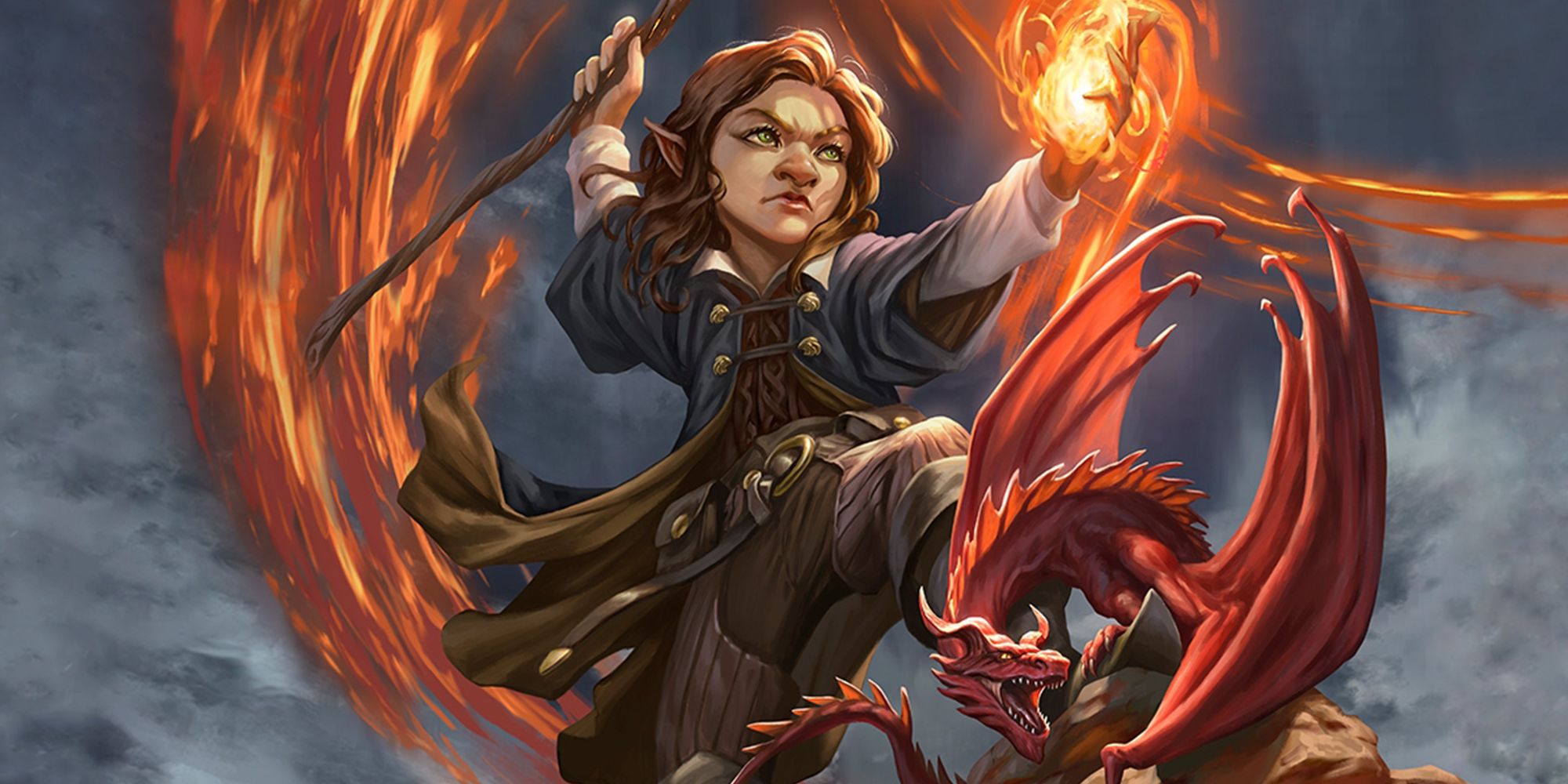The worlds of Dungeons & Dragons are as numerous as the stars in the sky thanks to the creativity of both DMs (Dungeon Masters) and players alike. Usually, these worlds operate consistently. The Dungeon Master's Guide provides our DMs with core rules and mechanics by which both non-player characters (NPCs) and PCs (player characters) everywhere must abide.
Even so, some players can't help but feel as though these rules are being used against them. A good DM would never hold a player to an action with unforeseen rules consequences the player didn't know about, however, a great DM also knows that holding players accountable to rules they've already been told is necessary to create verisimilitude. Thankfully, savvy players can use the same rules to fight back, but don't be surprised if these tactics lead to your DM's monsters taking your character a bit more seriously.
Updated June 27, 2023 by Chris Stomberg: Now that 5th edition is nearly a decade old, it's been discovered that certain combinations of builds, class abilities, spells, and more lead to some absolutely busted results. There are many niche rules interactions to take advantage of in Dungeons & Dragons, and this list is by no means exhaustive.
That being said, below are some of the most intuitive and devastatingly powerful ways for your PCs to break your DM's game. Just remember that, at the end of the day, the DM is supposed to be on the side of the players. Even though these strategies are completely rules proof, we recommend taking a step back if they give your DM too much of a headache.
6 Great Weapon Master + Barbarian Reckless Attack
Starting off the list with a very simple stunt, the combination of the feat Great Weapon Master with the Barbarian class makes for one of the best damage dealers in the early to middle levels of the game. While this is a rather well known pairing for veterans at this point, there are many players new to D&D who have yet to discover what's capable here.
The feat Great Weapon Master allows you to do something colloquially referred to as a "power attack" any time you take the Attack action. When you make an attack with a heavy weapon, you can choose to take a -5 penalty to the attack roll. If this attack hits, it deals +10 damage. While the penalty to hit would normally be a huge setback, the Barbarian's 2nd level Reckless Attack feature allows you to make your attacks at advantage.
In case you're curious, the math on advantage works out as around a +5 bonus. In other words, Reckless Attack completely offsets the penalty of Great Weapon Master, turning the feat into a huge damage bonus with no setback. Additionally, Great Weapon Master allows you to make another attack as a bonus action if you happen to land a killing blow on a monster. Enjoy the killing spree.
5 Sentinel + Polearm Master
Speaking of feats, you can also achieve some awe-inspiring abilities by combining them. To this end, there is perhaps no feat combination more popular and effective than the joining of Sentinel and Polearm Master. Besides being the best feat for a tank, Sentinel makes it so that you get the best opportunity attacks in the game.
Your opportunity attacks now reduced a creature's speed to zero, you can make them even if a creature disengages, and you can make an attack as a reaction against any creature who attacks an ally within five feet of you. Meanwhile, Polearm Master allows you to make an opportunity attack against a creature who enters your reach while wielding a glaive, halberd, pike, quarterstaff, or spear. The interaction that makes this so wild is that glaives, halberds, and pikes all also come with the reach property, giving them a melee range of ten feet.
In other words, a melee creature who runs towards you now provokes an opportunity attack once they're ten feet away from you. If that attack hits, their speed is then reduced to zero, and they are prevented from coming into melee range with you or any of your party members. Say goodbye to your turn, monster.
4 Bag Of Holding + Portable Hole
Here's a rules interaction found in the Dungeon Master's Guide that's completely absurd, plain and simple. Have you ever wondered what happens when you place an extradimensional space from a magic item into another extradimensional space? Well, the result is that the pressure of the two spaces coming together creates a rift in space that teleports any creature within 10 feet of it into the Astral Plane. There's no save for this effect. It just happens.
The Astral plane is a barren place where time does not exist and the husks of dead gods drift through space. Even so, there are those that live in this place of terror, though they'd be more likely to hurt than help anyone they encounter. Escaping the Astral Plane is nearly impossible unless you have access to magic that allows you to travel from plane to plane.
Consequently, crushing together two extradimensional spaces is a great last ditch tactic to use against an enemy you need to defeat, but it will likely come at the cost of at least one player character unless your party has a deadeye of an archer on their side.
3 Commander's Strike Maneuver + Rogue Sneak Attack
Rogues are naturally cheeky characters, so it only makes sense that they would have a broken rules interaction of their very own. The finesse of this move has to do with the exact wording of sneak attack which just so happens to say that sneak attack's damage can only be applied once per turn. Another translation is that if you can manage to attack with your Rogue outside of your own turn, you can roll your sneak attack dice again.
Normally, you would only be able to do this if an enemy was stupid or unfortunate enough to provoke an opportunity attack from your Rogue. However, the Battlemaster maneuver Commander's Strike allows a character to forgo one of their own attacks and use a bonus action to command another ally to make an attack as their reaction with the addition of a d8 superiority die to damage.
While this tactic would normally be reserved only for Battlemasters, the Martial Adept feat allows other classes to pilfer two Battlemaster maneuvers for their own use. If you think you've seen a toothy grin from your party Rogue before, just wait until you reveal this trick to them.
2 Peace Domain Cleric Emboldening Bond + Bless Spell
In case you didn't know already, Bless is lauded by some as the best 1st level spell in the entirety of the game. This concentration spell allows three PCs to add a d4 to all attack rolls and saving throws for the next minute, providing each of them with a huge numbers boost on both offense and defense.
Novice players might see this as a marginal statistical increase, but the math reveals that the boon this spell provides is far from marginal. While two instances of the same spell don't stack with each other, you can stack Bless with the Emboldening Bond feature from Peace Domain Cleric which has the same effect while also buffing ability checks by a d4.
The result is that three allies get to add 2d4 to their attack rolls and saving throws for the next minute. Combo this with some method of providing the PCs with advantage, and you've got a recipe for automatic successes.
1 Investment Of The Chain Master Invocation + Pact Of The Chain Pseudodragon Familiar
The Pact of the Chain is believed by many to be the worst of the Pact options available to Warlocks. However, the Investment of the Chain Master invocation found in Tasha's Guide to Everything turns this assumption on its head. This invocation does a lot of wonderful things, but there are two very important features for the Pseudodragon familiar specifically.
The first is that it allows you to use a bonus action to have your familiar make an attack. The second is that whenever your familiar forces a creature to make a saving throw, the DC (Difficulty Check) of that saving throw equals your own spell save DC.
The Pseudodragon is a great familiar thanks to blind sight, its keen senses providing it advantage on Perception checks, Magic Resistance giving it advantage against saving throws, and Limited Telepathy allowing it to communicate at long range. However, what we're really interested in here is its tail stinger poison.
When the Pseudodragon hits a creature with its sting, the target must make a Constitution saving throw or become poisoned for one hour. In addition, if the saving throw fails by five or more, the target also falls unconscious for the same amount of time unless it takes damage or another creature uses an action to wake it.
The DC for this ability is normally a very doable DC 11. Thanks to Investment of the Chain Master though, the DC increases to equal your own spell save DC. This means the DC can easily be bumped up to as high as 16 by 5th level, creating a familiar that can knock out most enemies for a single bonus action if they happen to roll poorly. Let the dungeon master rage begin.

